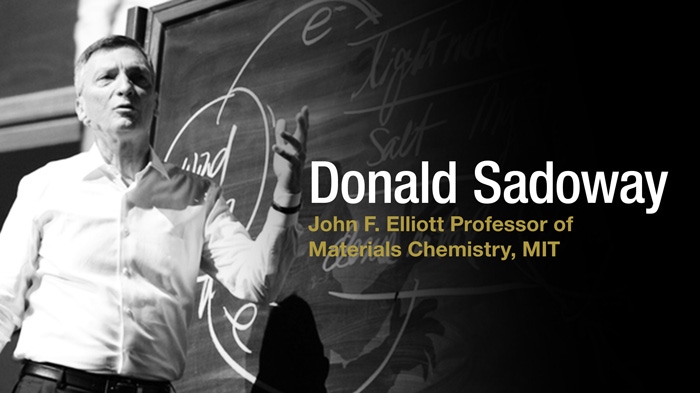Energy + Funding Programs
MIT Professor Donald Sadoway’s Formula for Energy Innovation: Increase Federal Research Funding
I've been a strong advocate for increased funding for energy R&D. MIT Professor Donald Sadoway makes the case that federal funding for university research is more important than ever—especially at a time when the private sector is cutting its research funding.


Federal funding plays a critical role in energy R&D. It is especially important at the university level, where discovery can lead to breakthrough technology but early stage exploratory activity simply cannot count on financial support from the private sector.
Perhaps industry finds the time scales too long and the funding levels too high for the sustained effort needed to take an idea from concept to product. Perhaps there are concerns over the ownership of intellectual property developed at a university.
Paralleling the problem of insufficient federal funding for energy R&D is a trend in U.S. industry to dramatically reduce in-house R&D—in some instances completely closing corporate research laboratories. Where will the discoveries take place then?
One way to increase the impact of federal funding that is available is to increase the size and length of research grants. I have found that small grants often only allow for a single graduate or postdoctoral student to chip away at a problem, typically on their own. The rate of progress is slow and the likelihood of a breakthrough is remote.
Shorter-term grants also limit the productivity of students pursuing advanced degrees. Instead of spending their time working on meaningful projects related to their area of expertise, they end up on a treadmill, serving as teaching assistants.
With large grants extending over, say, five years, faculty can assemble teams. This allows students and postdocs to teach each other, and it reduces the incubation time for significant new ideas to emerge.
In subject areas like energy, the scientific and technical issues are complex and variegated; hence, the expectation that a lone wolf researcher operating with a single graduate student can change the world is unrealistic.
For example, in one of my areas of research—batteries for electric vehicles—the systems-level understanding required on the part of the inventor/researcher reaches far beyond the boundaries of electrochemistry. Many factors come into play going from a single cell to a fully assembled pack of modules along with the battery management systems and power electronics.
To tackle complex research challenges effectively, it might make sense at the outset to assemble a team composed of materials scientists, electrochemists, electrical engineers, and mechanical engineers with a multi-year funding commitment up front. Are there any signs of progress on this front?
I’d say one federal agency—ARPA-E (the Advanced Research Projects Agency-Energy)—deserves recognition. Because its first round of grants was awarded less than two years ago, it’s too soon to pass judgment. But if what I saw on display in the technology showcase at the recent annual ARPA-E Energy Innovation Summit is any indication of what is to come, I’d say this model is one worth emulating at other agencies.
If only we could multiply its impact. In the first round of ARPA-E funding, the agency received 3,700 letters of intent, invited 350 concept papers, and made 37 awards. That’s a funding success rate of 1%. If this country is serious about taking a leadership position in energy technology, that number needs to be a lot higher. We can do a lot better. Let’s start spending on energy, as we do in the life sciences, as if the future of our way of life hangs in the balance. Because it does.
Donald Sadoway is the John F. Elliott Professor of Materials Chemistry at the Massachusetts Institute of Technology. Watch his TED2012 talk The Missing Link to Renewable Energy.

